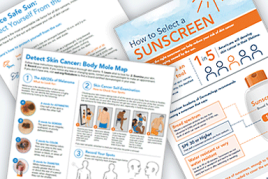Head lice: Who gets and causes
Who gets head lice?
Anyone can get head lice. In the United States, children in preschool and elementary school are most likely to get head lice. Children can spread the lice to their parents, caretakers, and others in their households.
Girls seem more likely than boys to get head lice. This may be because girls tend to have more frequent head-to-head contact than do boys. You’ll often see girls in head-to-head contact at school, on the playground, at camp, or at a slumber party.
What causes head lice?
Head-to-head contact is the most common way to get head lice. The lice move from one person to the next by crawling. They cannot fly or jump. It may seem like lice can jump because they are tiny and move quickly.
Head lice actually crawl everywhere. They crawl from person to person and on to objects that come into contact with human hair such as hats and towels.
Because head lice crawl onto objects that have touched the human head, it is possible to get head lice by sharing everyday objects infested with lice such as hats, scarves, coats, hair accessories, brushes, combs, and towels. Resting your head on a bed, pillow, couch, chair, or rug that someone with head lice used is another way to get head lice.
References
Frankowski BL, Bocchini JA. “Head Lice.” Pediatrics 2010; 126(2):392-403.
Jacobson CC, Abel EA. “Parasitic infestations.” J Am Acad Dermatol 2007; 56(6):1026-1043.
 Atopic dermatitis: More FDA-approved treatments
Atopic dermatitis: More FDA-approved treatments
 Biosimilars: 14 FAQs
Biosimilars: 14 FAQs
 How to trim your nails
How to trim your nails
 Relieve uncontrollably itchy skin
Relieve uncontrollably itchy skin
 Fade dark spots
Fade dark spots
 Untreatable razor bumps or acne?
Untreatable razor bumps or acne?
 Tattoo removal
Tattoo removal
 Scar treatment
Scar treatment
 Free materials to help raise skin cancer awareness
Free materials to help raise skin cancer awareness
 Dermatologist-approved lesson plans, activities you can use
Dermatologist-approved lesson plans, activities you can use
 Find a Dermatologist
Find a Dermatologist
 What is a dermatologist?
What is a dermatologist?